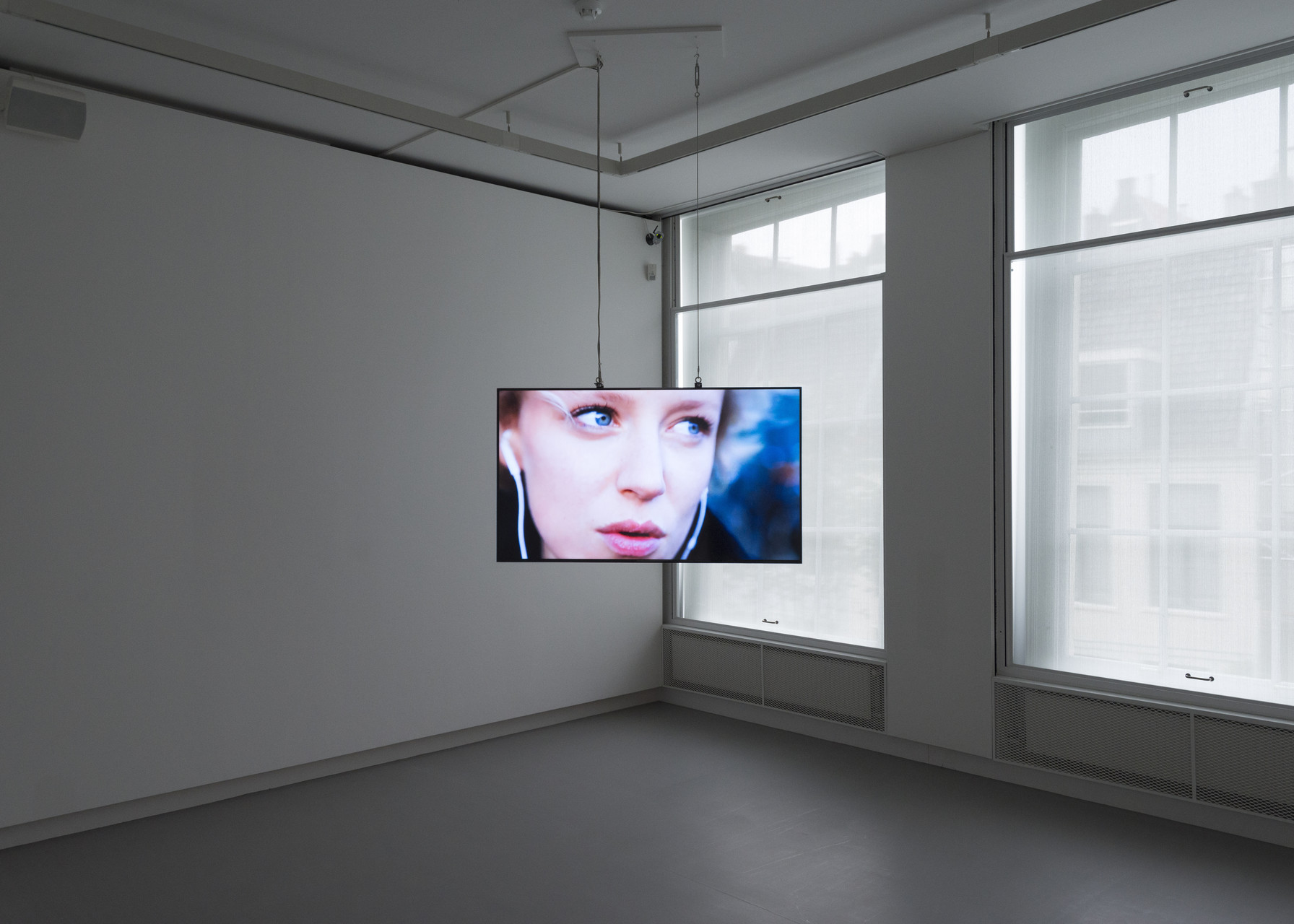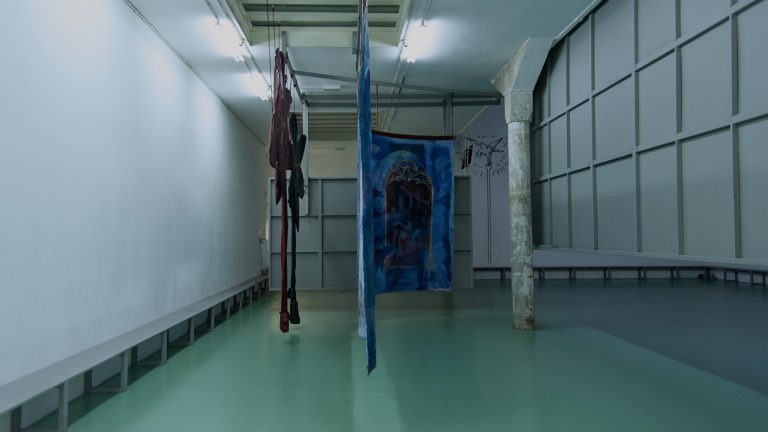The final project of the Curatorial Programme 2014 – 2015 at de Appel arts centre opened with two exhibitions: Spell to Spelling ** Spelling to Spell and Your Time Is Not My Time.
Spell to Spelling ** Spelling to Spell emerges in the spaces between the linguistic and associative relations of the notions of the spell and the spelling. The exhibition investigates various facets and rituals dealing with voluntary, involuntary and removed memory of the author, the visitors and the artworks themselves. Many ways of unfolding references, sources, stories and histories behind the objects are explored within the exhibition.
Your Time Is Not My Time lays the question of blurred boundaries between viewer, author and user within the current habitual fear of missing out and hyper-circulation of images. The exhibition uncovers a thorough pace and tacit admission within the changing lexicon of the public sphere, data-driven economies and forms of usership.
Spell to Spelling ** Spelling to Spell
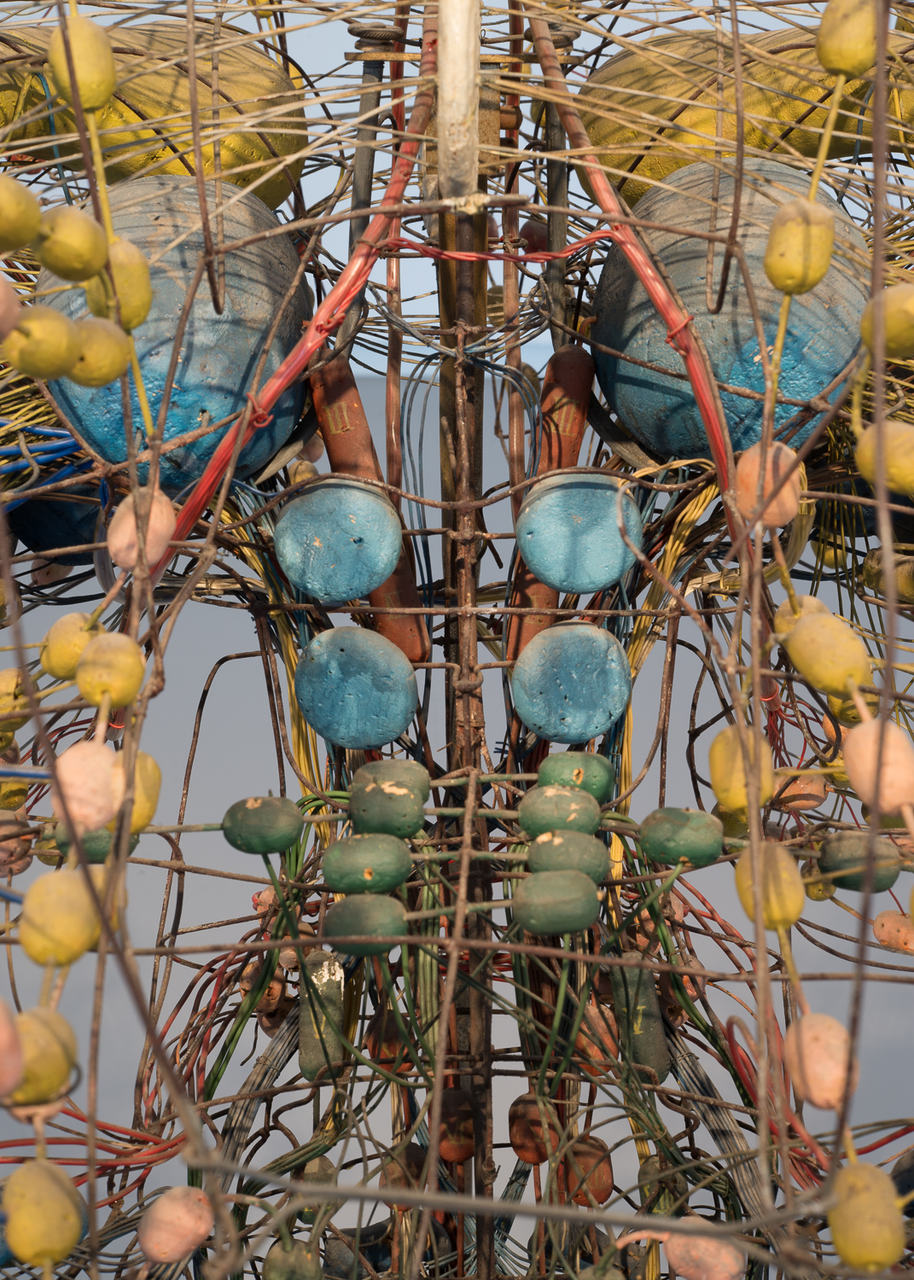
Artists: David Bernstein, Francisco Camacho, Alberto De Michele, Christian Fogarolli, Ola Lanko, Martin La Roche, Myriam Lefkowitz, Charles Matton, Robertas Narkus, Ossip
Exhibition: Spell to Spelling ** Spelling to Spell
Venue: De Appel, Amsterdam, The Netherlands
Curated by: Chiara Ianeselli and Inga Lāce
Photography: Cassander Eeftinck Schattenkerk, images courtesy de Appel arts centre, Amsterdam
 Ola Lanko, Sentinels of the Multiverse, 2015
Ola Lanko, Sentinels of the Multiverse, 2015
 Ola Lanko, Sentinels of the Multiverse, 2015
Ola Lanko, Sentinels of the Multiverse, 2015
 Ola Lanko, Sentinels of the Multiverse, 2015
Ola Lanko, Sentinels of the Multiverse, 2015
 Ola Lanko, Sentinels of the Multiverse, 2015
Ola Lanko, Sentinels of the Multiverse, 2015
 Martin La Roche, String Too Short To Be Saved, 2015
Martin La Roche, String Too Short To Be Saved, 2015
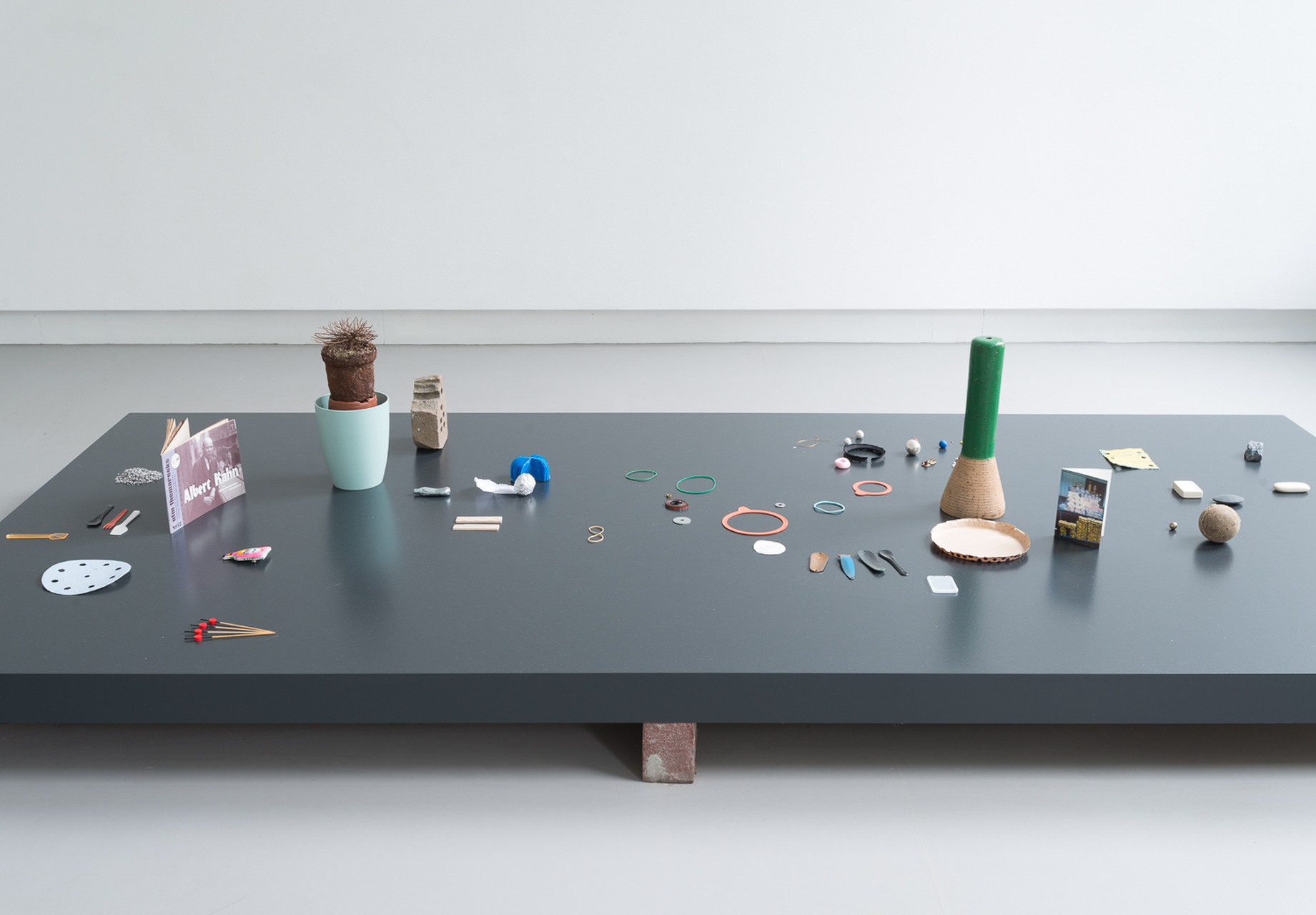 Martin La Roche, String Too Short To Be Saved, 2015
Martin La Roche, String Too Short To Be Saved, 2015
 Martin La Roche, String Too Short To Be Saved, 2015
Martin La Roche, String Too Short To Be Saved, 2015

Martin La Roche, String Too Short To Be Saved, 2015
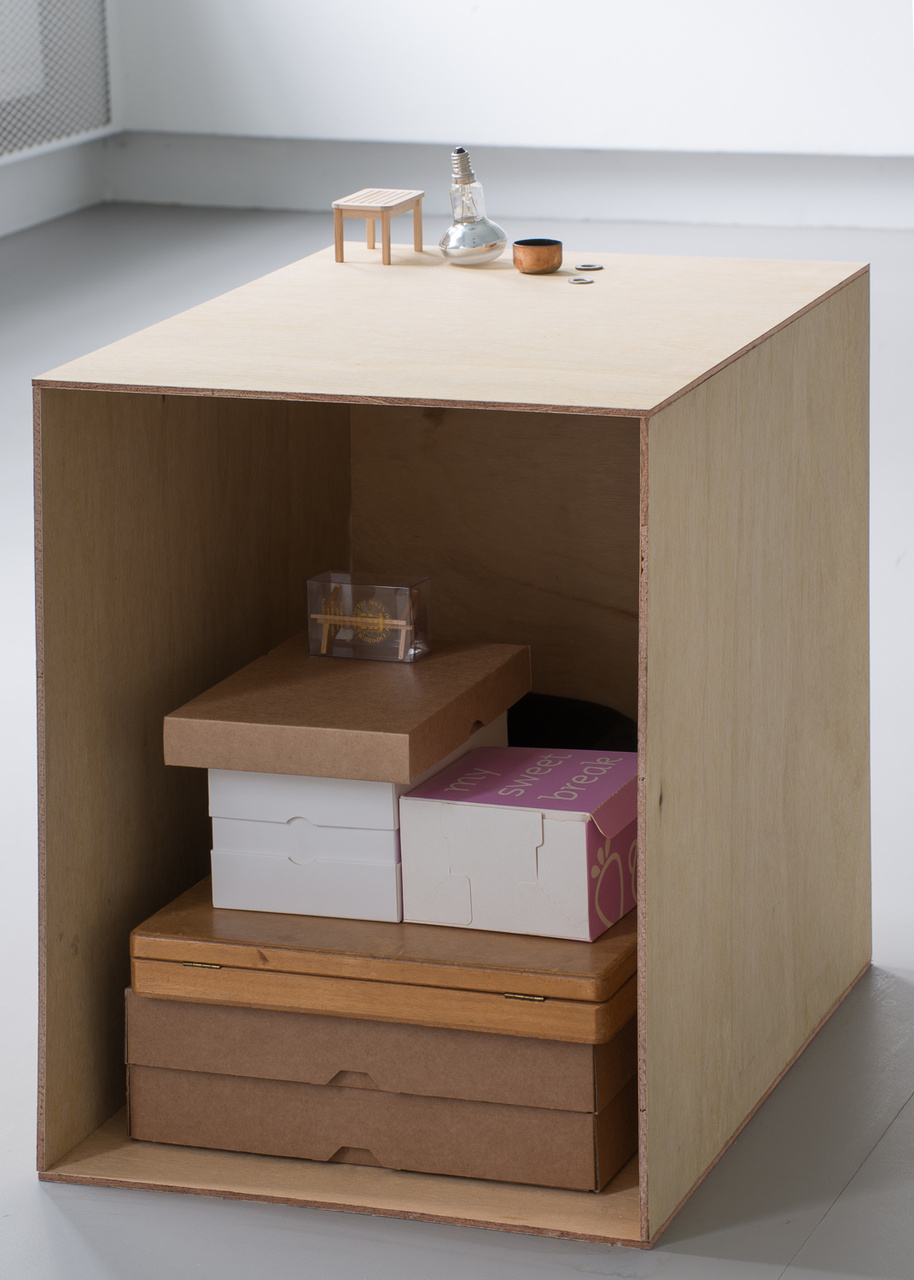
Martin La Roche, String Too Short To Be Saved, 2015
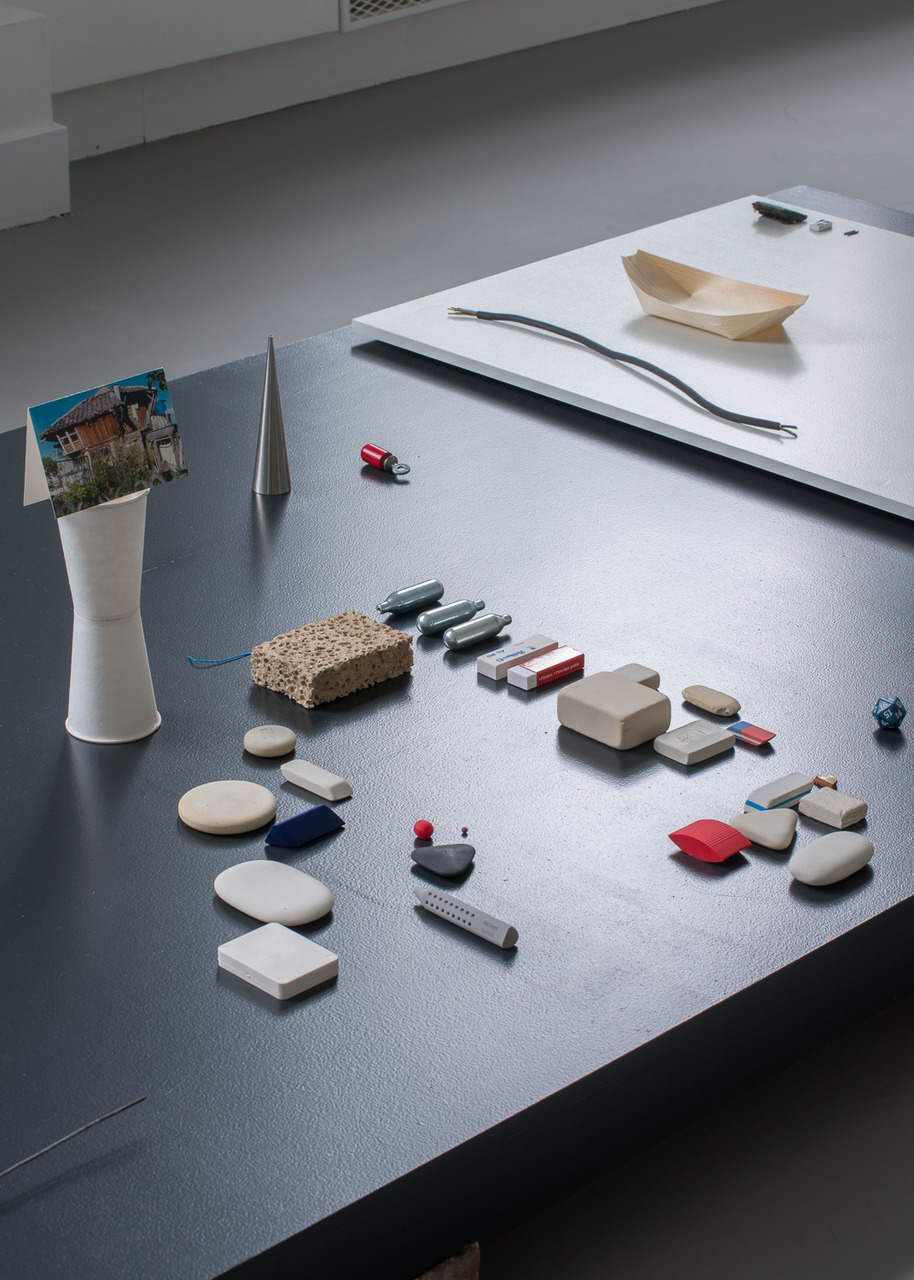
Martin La Roche, String Too Short To Be Saved, 2015

Christian Fogarolli, Remember, 2015 / Repeat, 2015 / Rework, 2015

Phantom des Faserverlaufes im menschlichen Gehirn und Rückenmark (Phantom of the course of the nerve fibers in the human brain and the spinal cord), F. Büchi, before 1885

Phantom des Faserverlaufes im menschlichen Gehirn und Rückenmark (Phantom of the course of the nerve fibers in the human brain and the spinal cord), F. Büchi, before 1885

Phantom des Faserverlaufes im menschlichen Gehirn und Rückenmark (Phantom of the course of the nerve fibers in the human brain and the spinal cord), F. Büchi, before 1885 (detail)

Christian Fogarolli, Remember, 2015
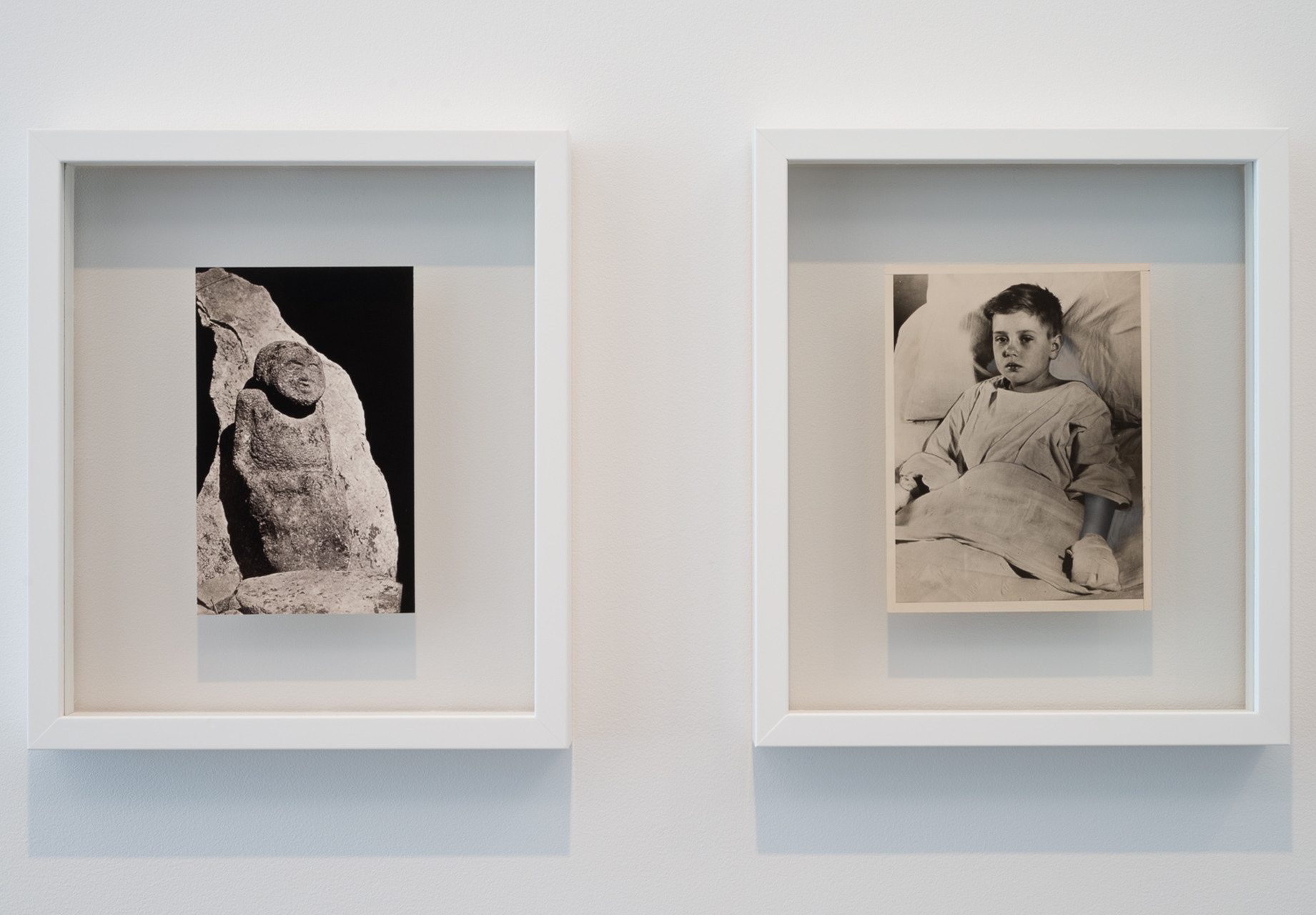
Christian Fogarolli, Remember, 2015

Christian Fogarolli, Repeat, 2015

Charles Matton, Project of a Rhinoceros Sculpture Studio in the Coudray – Montceaux Garden, 1978
 Charles Matton, Project of a Rhinoceros Sculpture Studio in the Coudray – Montceaux Garden, 1978
Charles Matton, Project of a Rhinoceros Sculpture Studio in the Coudray – Montceaux Garden, 1978
 David Bernstein, Se non è vero è ben trovato, 2015
David Bernstein, Se non è vero è ben trovato, 2015
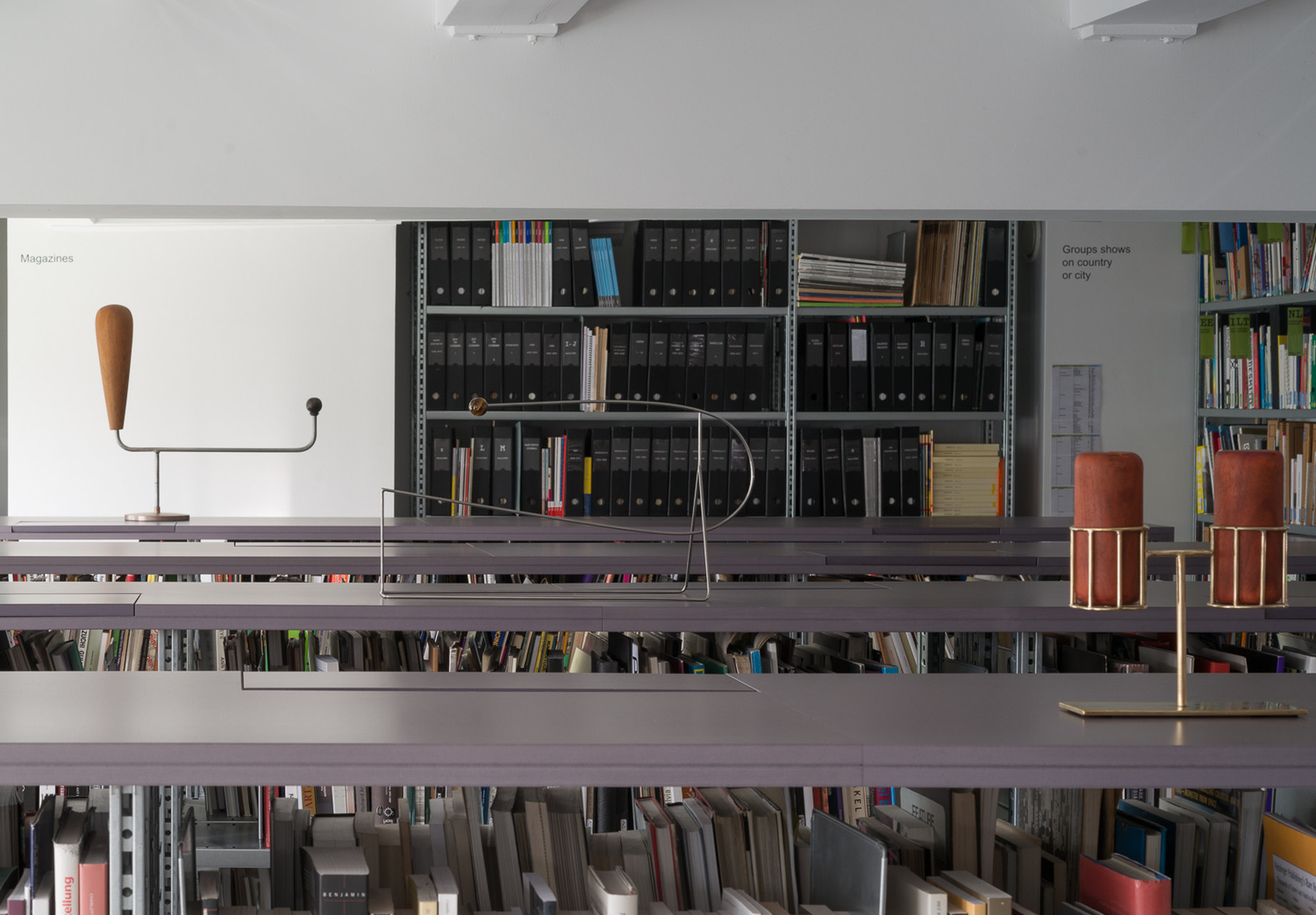 David Bernstein, Se non è vero è ben trovato, 2015
David Bernstein, Se non è vero è ben trovato, 2015

David Bernstein, Se non è vero è ben trovato, 2015

David Bernstein, Se non è vero è ben trovato, 2015

David Bernstein, Se non è vero è ben trovato, 2015
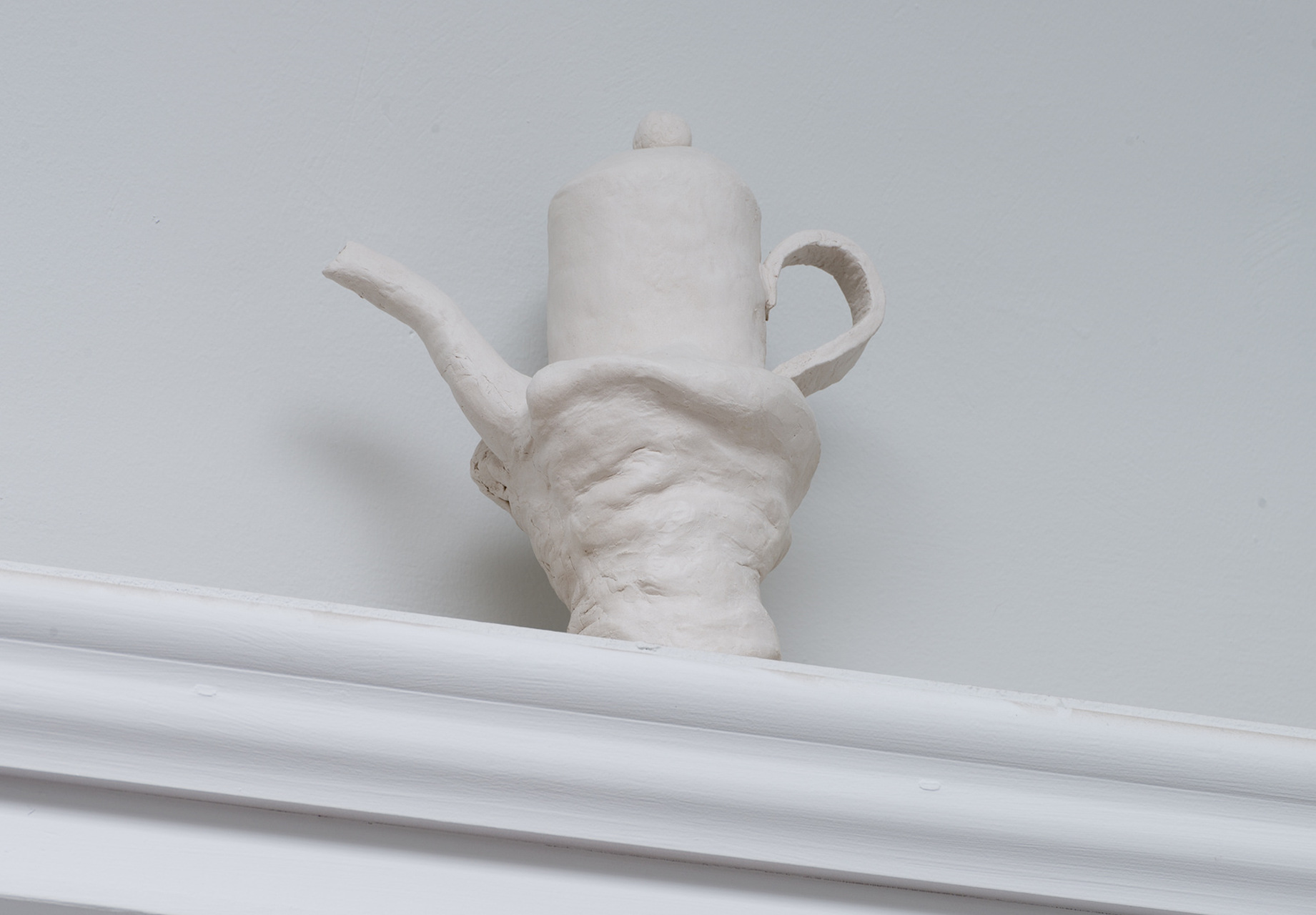 Francisco Camacho, Form of Ideas Guided Tour, 2015
Francisco Camacho, Form of Ideas Guided Tour, 2015

Francisco Camacho, Form of Ideas Guided Tour, 2015

Francisco Camacho, Form of Ideas Guided Tour, 2015

Francisco Camacho, Form of Ideas Guided Tour, 2015
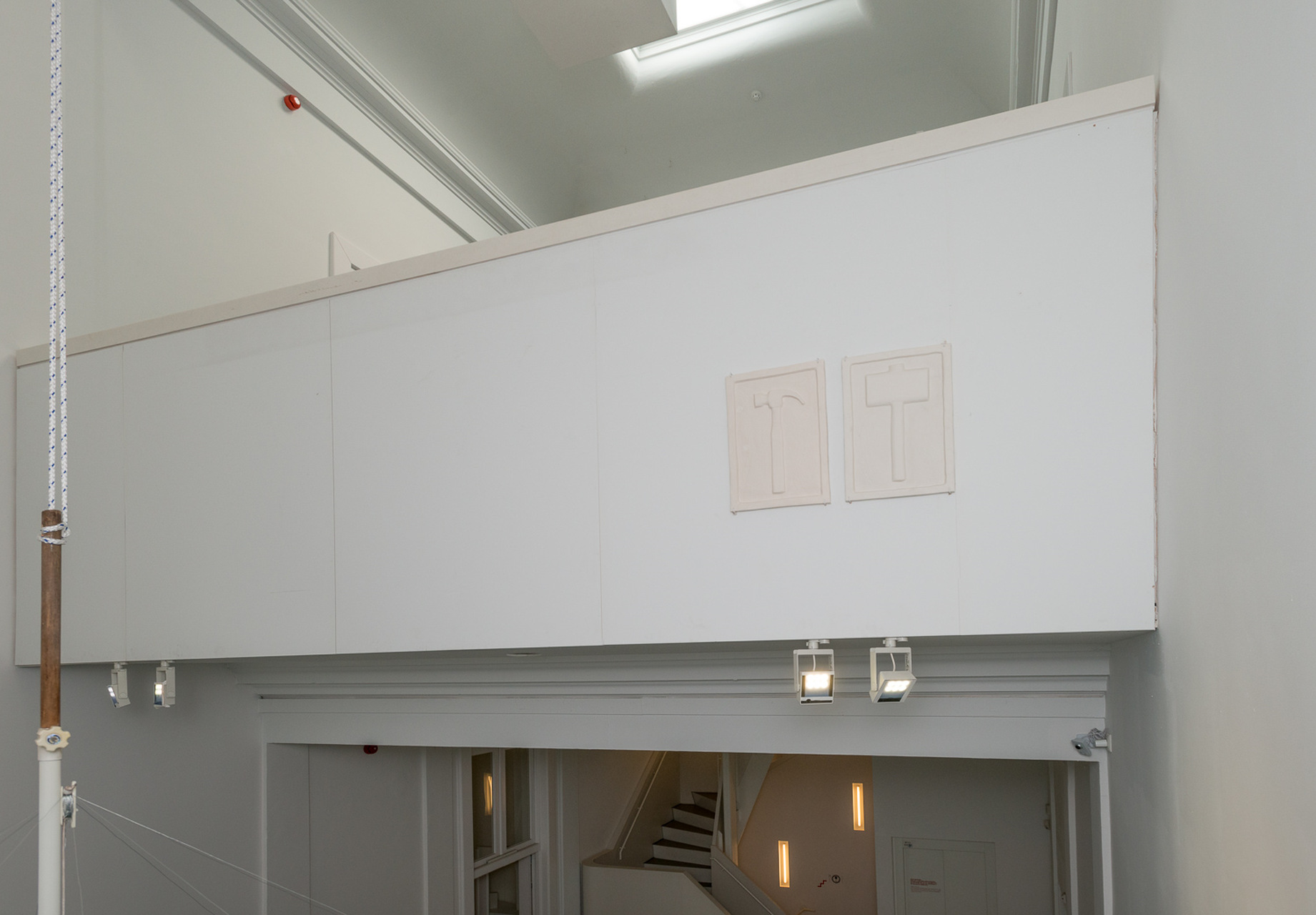 Francisco Camacho, Form of Ideas Guided Tour, 2015
Francisco Camacho, Form of Ideas Guided Tour, 2015
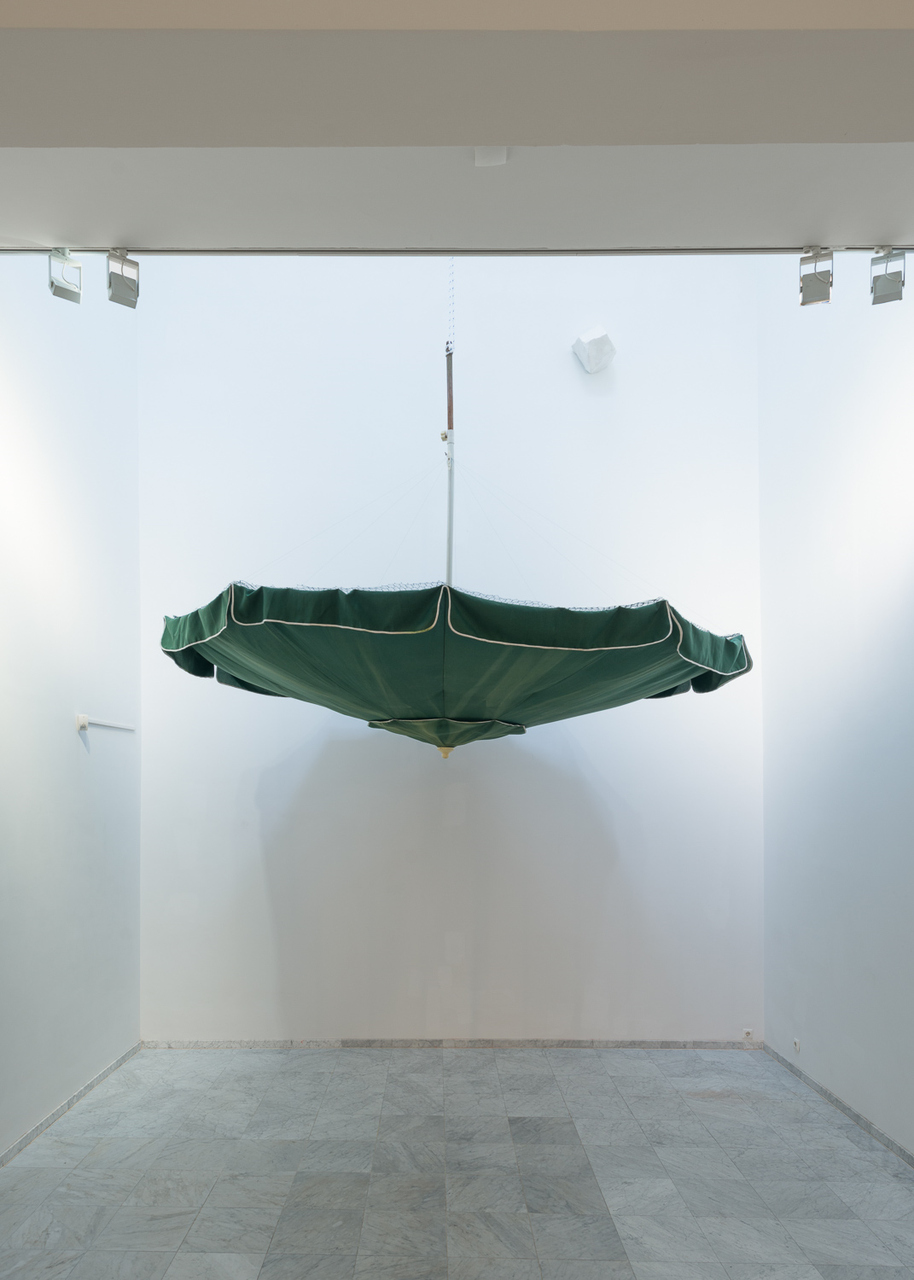
Robertas Narkus, TNRLRNT Myriad (Tuna Roll or a Nut) edition, 2015

Robertas Narkus, TNRLRNT Myriad (Tuna Roll or a Nut) edition, 2015
 Robertas Narkus, TNRLRNT Myriad (Tuna Roll or a Nut) edition, 2015
Robertas Narkus, TNRLRNT Myriad (Tuna Roll or a Nut) edition, 2015
Your Time Is Not My Time
 Artists: Lav Diaz, Benjamin Forster, Andrés Galeano, Riley Harmon, Metahaven, Alexandra Navratil, Sam Smith, Wu Tsang, Bruno Zhu
Artists: Lav Diaz, Benjamin Forster, Andrés Galeano, Riley Harmon, Metahaven, Alexandra Navratil, Sam Smith, Wu Tsang, Bruno Zhu
Exhibition: Your Time Is Not My Time
Venue: De Appel, Amsterdam, The Netherlands
Curated by: Barbara Cueto, Bas Hendrikx, Lian Ladia
Photography: Cassander Eeftinck Schattenkerk, images courtesy de Appel arts centre, Amsterdam

Bruno Zhu, For Reference Surely, Comfortably, 2015
 Bruno Zhu, For Reference Surely, Comfortably, 2015
Bruno Zhu, For Reference Surely, Comfortably, 2015
 Bruno Zhu, For Reference Surely, Comfortably, 2015
Bruno Zhu, For Reference Surely, Comfortably, 2015
 Bruno Zhu, For Reference Surely, Comfortably, 2015
Bruno Zhu, For Reference Surely, Comfortably, 2015

Bruno Zhu, For Reference Surely, Comfortably, 2015
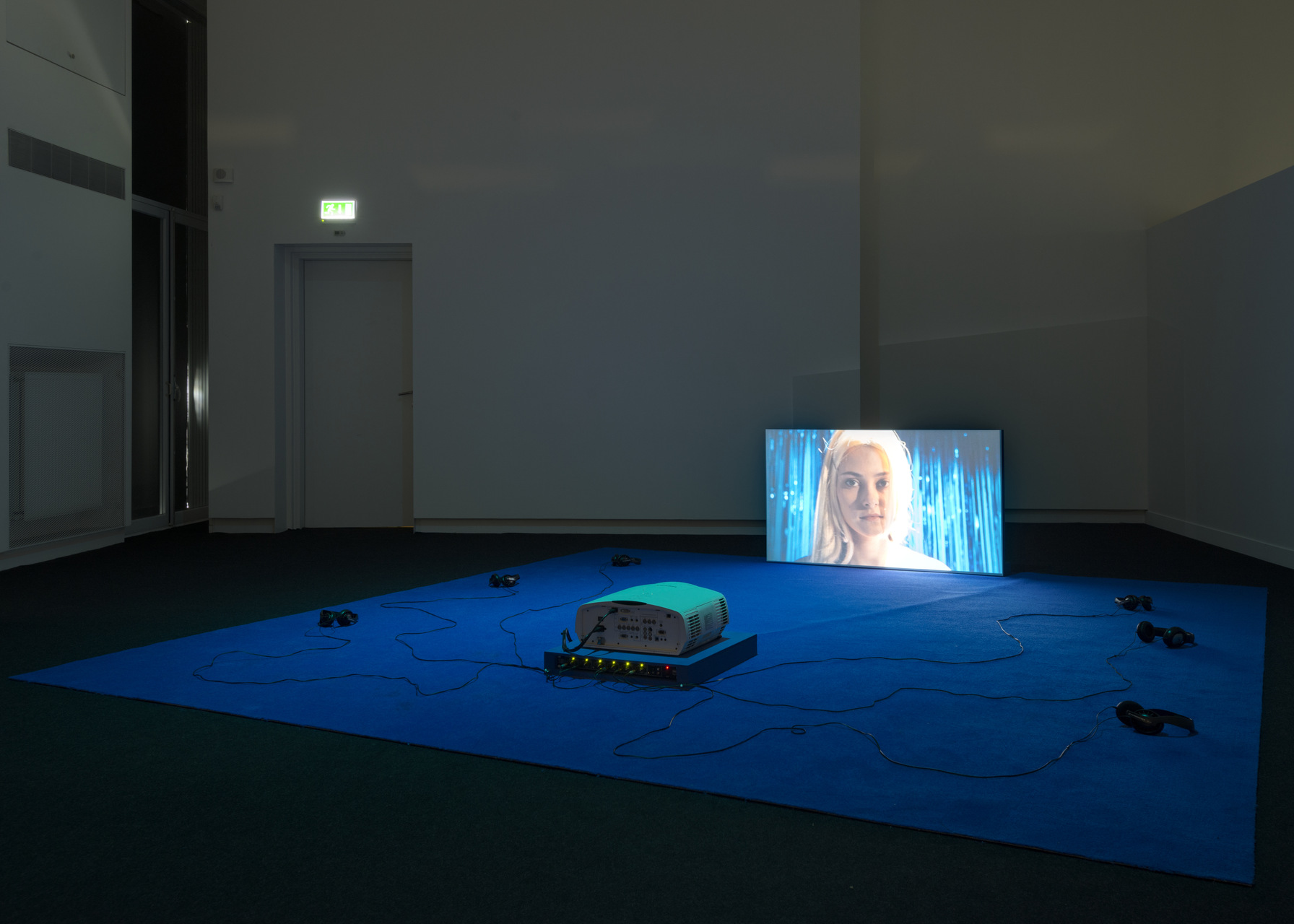 Riley Harmon, A Method For Blue Logic, 2014
Riley Harmon, A Method For Blue Logic, 2014
 Alexandra Navratil, Resurrections, 2014,
Alexandra Navratil, Resurrections, 2014,
 Tilman Hornig, GlassBook, 2014
Tilman Hornig, GlassBook, 2014
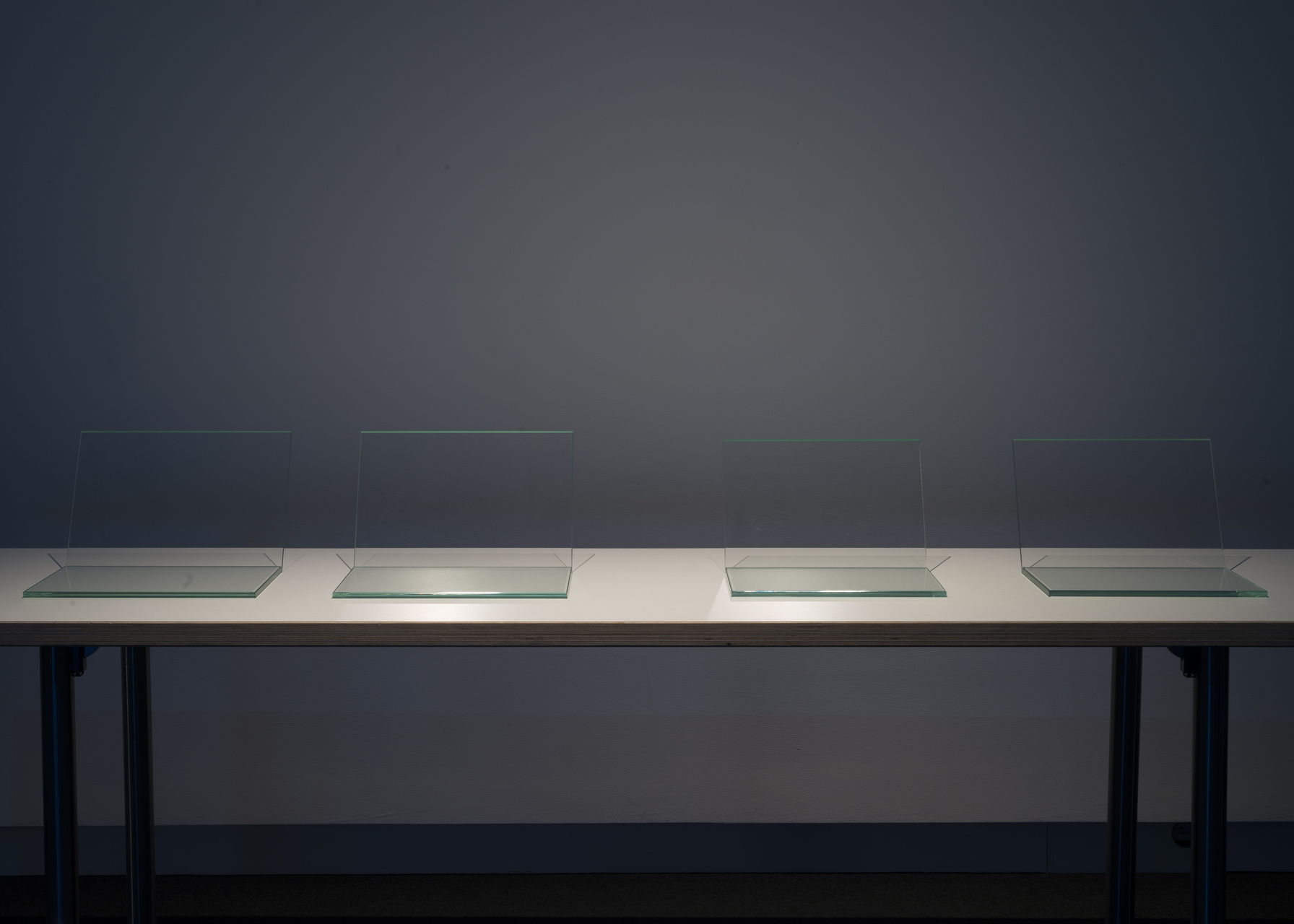 Tilman Hornig, GlassBook, 2014
Tilman Hornig, GlassBook, 2014
De Appel Curatorial Programme: a conversation with Lian Ladia and Inga Lāce about the exhibitions Your Time Is Not My Time and Spell to Spelling ** Spelling to Spell currently on view at de Appel arts centre in Amsterdam
– Karima Boudou
de Appel arts centre currently hosts in its premises of Prins Hendrikkade, 142 two exhibitions by the current Curatorial Programme participants, continuing and rewriting a tradition since the creation of the practice-based programme in 1994. We spoke to Lian Ladia and Inga Lace about their experience in Amsterdam, recalling the first steps of each curatorial project, the questions raised about the conditions of meaning and production, the relation to the local art scene and the effects of this experience on a professional and personal level.
Karima Boudou: To start off, I’d like to know what did you do before coming to Amsterdam.
Lian Ladia: I was in Manila and I was an independent curator, part of a contemporary art platform called Planting Rice. It was a portal of discussion for my peers in Southeast Asia and also for the local art scene in Manila. We had curatorial projects but also we were building discussions and archives about the local art scene and the local contemporary art history.
Karima Boudou: Did you create this platform because there was not that pre-existing tool?
Lian Ladia: Yes. I co-founded it with a good friend of mine who is also an independent curator. We were coming from the same generation and also had the same questions , the same desire to inform ourselves about our contemporary art history, our history of critical work in the Philippines and of course tied to that is also a discussion within the region. It also came in the way of free social networks and these shared networks. It became really easy to talk to people from other countries in the region or within the diasporic community of Manila. It was also a good and easy exchange.
Inga Lace: I did my bachelors in Asian studies which was at that time a new program in Latvia, so I was studying Arabic, and also the history of art in the Middle East, but then in parallel I started to work in art galleries or exhibition spaces in Riga. I was involved for one year in Mains d’Oeuvres close to Paris, and coming back to Latvia I started working in the Latvian Centre for Contemporary Art where I worked before coming to de Appel. The projects I did were very much connected to the Baltic countries or the Eastern Europe, like rethinking what is the current state and influence of history, the Soviet Union and also parallely the art centre does research into the ‘non-conformist’ practices in the Soviet times. One big project we do every year is a contemporary art festival Survival Kit which looks more at the present issues in contemporary art and the world. The festival usually takes place in empty buildings in the city and on the one hand it wants to actualize the question of not having enough art spaces in the city, and on the other hand it’s also very interesting to inhabit another different location. For example one festival happened in a former school and this year it’s happening in the former library; so it kind of adds a lot to the theme usually.
KB: So was it also a way to activate these spaces?
IL: Yes, for example, another one of the projects that I have done in Riga was in the former building of the KGB. It is a place that condenses so much of this historical heritage and all these painful questions that are not talked about publicly because it addresses the soviet history and currently some things that are kind of hard to say. It was an exhibition called “(Re)construction of Friendship”, it was using the metaphor of friendship when talking about the relationships about the countries in Europe and what it means for the lives of people.
KB: The current exhibitions at de Appel are titled ‘Your Time Is Not My Time’ and ‘Spell to Spelling ** Spelling to Spell’. How was this process of collaboration and can you talk a little about some of the themes and narratives?
IL: I remember us coming almost every two weeks to meetings presenting our own ideas, what we would like to do, and we would be sharing all these individual ideas, sometimes there would be some kind of overlaps, sometimes there would be none. Through this whole process at some point it became really dependent on time because we would have to make these decisions. We split in two groups, also the two groups was somehow influenced by personal group dynamics but also I think it was a split in terms of methods that we use and that we want to use or also in terms of what themes we are interested in. Very early you could distinguish that some people have some things in common, they can talk about things and develop something, and the other ones go into a different direction.
LL: There was also this discussion of collaboration and how compromise can water down concepts and how you can deal with that. How do you deal with pursuing an idea? What do you do with negotiating an idea? What gets nurtured and what gets lost?
IL: You also wonder how to relate to Amsterdam and the local art scene, because we all come from different contexts. For instance, me and the co-curator of the Spell to Spelling ** Spelling to Spell exhibition Chiara Ianeselli did many studio visits in Amsterdam, actually all of us did that. But we both thought these visits to artists were really the most inspiring parts by getting to talk to them, to get to know what was behind these works of art. That was also how we chose the artists, many of them come from our studio visits. We didn’t want to force them to adapt to a concept, even though afterwards we had to write a text; and then the title ‘Spell to Spelling ** Spelling to Spell’ was created.
LL: Sometimes there is specific strategies, you start from an idea and build upon it. Sometimes you are already given with an infrastructure and you build something within this infrastructure. In general these festivals and exhibitions that come up with a general theme and include many artists into that, we somehow wanted to avoid that.
KB: How would you speak of one thing, an image part of the exhibition?
IL: The title ‘Spell to Spelling ** Spelling to Spell’ catches the attention quite a lot. Sometimes you don’t talk about it and then people are asking you “why this title?” Actually the title is quite important because “spell” is something that we came up with by thinking of this possibility of an artwork that can cast a spell on someone. We didn’t want only to lead it on the direction of magic, we also were confronted with the fact that in English the word “spell” has the same root as the word “spelling”. With the word “spelling” if you actually look at the etymology of the word it also says “telling”. It somehow seems there is this tension between showing and telling: what is the object and image and what do you tell about it? So we wanted to explore these relationships within the exhibition.
KB: I had the feeling that the exhibition ‘Your Time Is Not My Time’ upstairs at de Appel was less introspective than the one downstairs; by addressing a hyper contemporary condition of mass circulation of information, text, images in our everyday lives.
LL: There is this overarching theme with the exhibition, but there is also this strategy of how to articulate this kind of condition. By not being limited by the physical space of the exhibition, it becomes more like a mental space, more like gathering things together that are seemingly connected. So we have the physical aspect of the space and then we also have other things going on like for example a film screening in an artist run cinema house who have their own pace and time of programming things, and then we have a work in the catalogue. Or we have a specific date for a specific moment. So to me that was interesting on how to create a programme within this frame of mind.
KB: To come back to the artists and your encounter with them, how did you get to know their work for both exhibitions? Did you bring some artist’s works from your own respective contexts?
LL: I think de Appel has a very interesting position in the art scene in the sense that it has these networks which makes studio visits or artists residencies accessible to you. So there is that because of convenience, you get to have different appointments with different studios. It really depends on your collaborators, we also were looking with them at our personal experiences with artists, our personal choices. Whatever was synonymous with all of us seemed to have a space in the exhibition.
IL: For us it was mostly many of the artists we met during the studio visits at the Jan Van Eyck Akademie or elsewhere. For example during a trip to Colombia we went to Cali where we met the Italian artist Alberto de Michele who just moved to Cali. So it happened by these consequences and different chances.
KB: I would like to come back, in this discussion, to one of the basics of curating. How did you think and work with and inside the space of de Appel? What was your first impression of this space?
LL: That’s a complicated question because when we got into the programme that’s also one of the characteristics of de Appel, it’s an institution with an exhibition space. You have to constantly deal with that and include it in the conception of your curatorial programme. If you decide to not use the space how does it fit in the economy of how things work within the physical year of the institution. It goes into that kind of conversation.
IL: We had at the beginning a case study about the boycott in arts and culture in the recent years which was overflooding at the moment, I think, in the art world. We very soon realized it was not going to lead us to an exhibition or to a final project. We also had at the beginning more immaterial plans that would focus more on a discursive programme, doing a summer school, not having this heavy center in de Appel. It gradually changed and became an exhibition. Some of our events were taking place outside of the building. For example Myriam Lefkowitz who is a French artist and is actually doing walks into the city with one guided and one guide, so there is this trying to go out the building as well.
LL: It also introduces you to this idea of the space and the institution and the stakeholders for sustaining this space which means you have to deal with audience numbers and the physical manifestation of these audience numbers. Either you come to an extreme concept, or you compromise with the institution to negotiate something that works not only for your intellectual growth but also the stakeholders of the positioning of de Appel in the Netherlands art scene.
KB: What are some of the works that are shown? Could you describe one you have in mind?
LL: There is this artist Tilman Hornig whom my colleagues were really affected when they went to Cologne and had seen his work. In my case when I went to Zürich, I went to the solo exhibition of Wu Tsang and that’s how I got to be really interested in the work, and had this intense desire to share it to my colleagues. It sort of sparked the idea of working with him. We had a work in my mind which would utilize a whole room in the exhibition space. He is the kind of artist who utilizes the video as well as the experience of the viewer in the space, watching the video or the film; this idea of the cognitive aspect of watching, using references in film, hypercirculation of text and images in how he creates work. The work of Wu Tsang shown at de Appel is basically a monitor within an installation of gold curtain. What Wu Tsang is doing is that he is re-performing the words from a manifesto on rights for the autistic by autism activist Amanda Baggs. She has a blog, she has autism which means her physical body is depleted but she has very intellectual thoughts about the condition of society and how people communicate with each other. So she speaks through a computer voice, and Wu Tsang re-performed this voice and the transmission of these ideas were somehow more universal. So it is really about dealing with the hyper circulation of images and text, re-appropriating it to your own voice and your own language.
KB: I recall also the performance by Martin la Roche. Do you consider it as an activation of his own work?
IL: Yes, he calls these performances the “unfolding performances” meaning that he unfolds objects and things from the boxes. For him this moment is very important when the collection is activated and unfolded. He has been researching two collections that have been folded in boxes for many years and unfolded only afterwards. One is the collection of Albert Kahn who had this utopian idea of documenting the world before its ‘modernization’, his collection not being visible for a long time. The other collection is the one of Lina Bo Bardi who was a Brazilian architect who had a desire in the everyday objects in Salvador that she would collect. During dictatorship she had to stop. Only by chance these things were not destroyed and found by someone else. So last year Martin la Roche saw some of these objects in a museum in Switzerland. He collects small objects from everyday life situations, and makes some combinations of them in the platforms you can see at de Appel. Then he also does some unfoldings of the objects to reflect upon the taxonomy around collecting.
LL: There is several connotations of collections, the idea of a ‘conquest’ in relation to a collection, but also this psychological desire of collecting also exists.
KB: To finish I would like to come back here to a more local level. What interests or excites you about the local art scene, and Amsterdam as a city?
LL: What I like about the Netherlands is that I discovered that the center in our discussions is not just concentrated in Amsterdam. There is also Rotterdam, Utrecht, Maastricht… these other cities that are equally interesting. I find museums and spaces in other cities that are equally as interesting as in Amsterdam.
IL: I have a very happy feeling and also a respect for the environment created here, there are people and students coming here every time from everywhere in the world. It’s really this place where you can meet artists and curators from so different places, and that’s also something that enriches the discourse, I think.
Lian Ladia is a curator and writer based in Southeast Asia. In 2011, she co-founded the artistic platform Planting Rice in Manila with curator Sidd Perez. Aside from curatorial projects featuring emerging artists and repotentialised spaces (whether online, in print or actual public spaces), the initiative has aimed to foster the cross-pollination among artistic communities. The online platform Planting Rice offers a resource of writings about current discussions and collaborations developing beyond available publications or mainstream spaces in Manila.
Inga Lāce is a curator from Riga, Latvia. She has worked at the Latvian Centre for Contemporary Art (2012-2014) where her recent projects included the exhibition Re:visited (2014), the contemporary art festival Survival Kit 5 and its symposium Slow Revolution. Art in the Institutional and Territorial Peripheries (2013). She has co-curated several other exhibitions and conducted research projects such as Revisiting Footnotes (2013-2014) and (Re)construction of Friendship (2014), located in the former KGB house in Riga.
Karima Boudou is an art historian and independent curator based in Amsterdam. She attended de Appel Curatorial Programme in 2012/13.

